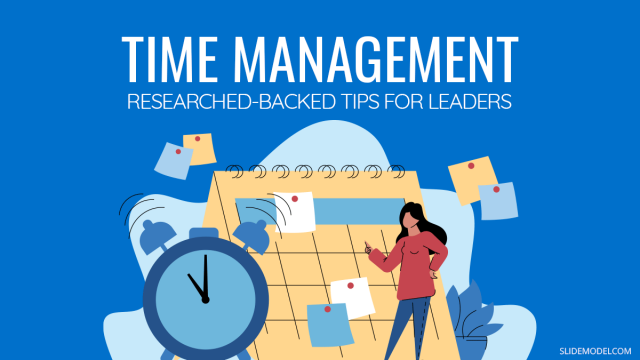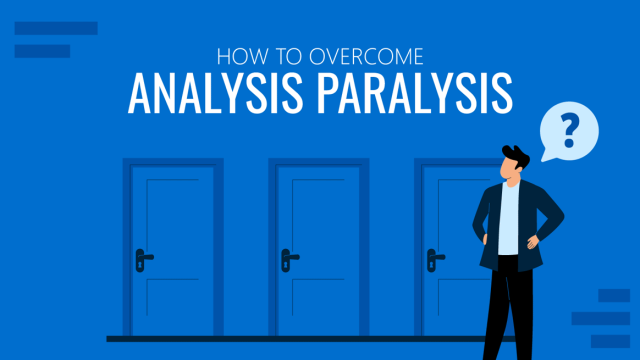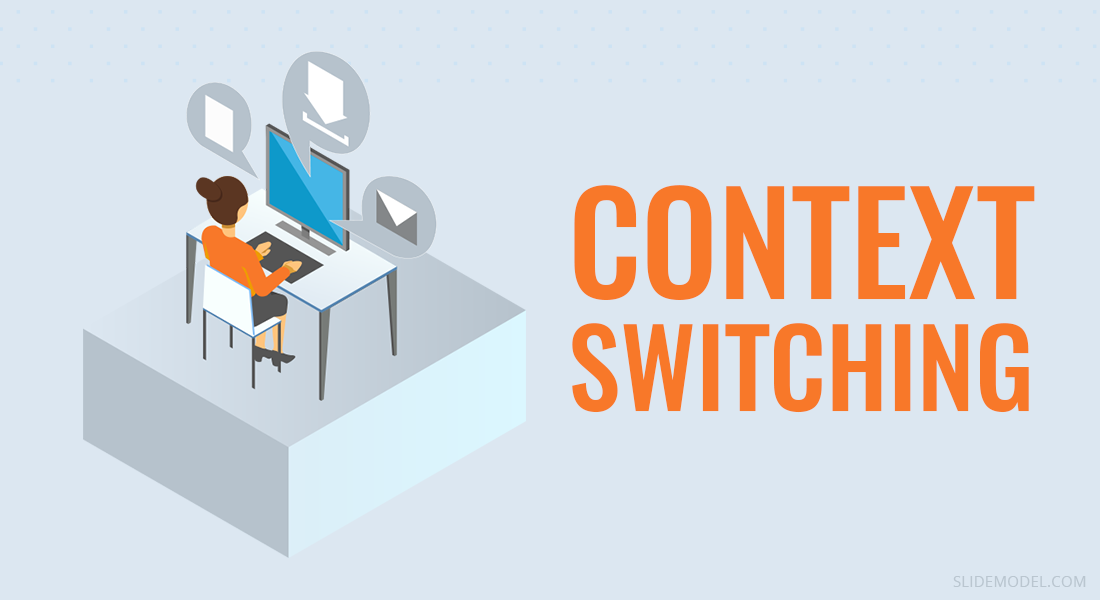
Did you know that about 28 billion man-hours are wasted each year because of what we now call context switching or multitasking?
This was the conclusion of Johnathan Spira, CEO of the research firm Basex. Come to in his book. All those wasted hours translate to about $1 trillion in losses to the U.S. economy alone. Ouch, that’s a lot of money left on the table due to a preventable issue!
But hey, we all know that staying productive can be tough. When even the smallest of disruptions come along, focus on a task can be broken. In fact, a team of researchers at the University of California, Irvine, concluded that it can take up to 25 minutes to fully regain focus after even a short 3-minute interruption.
If you are finding that lack of focus and constant interruptions are affecting your work, then this post is for you. You’ll learn exactly what context switching and multitasking are and get some tips on how to overcome both of these productivity-breakers!
- So What is Context Switching?
- A Quick Multitasking Definition
- How to Reclaim Your Focus? – 4 Productivity Tips That Work
- Conclusion
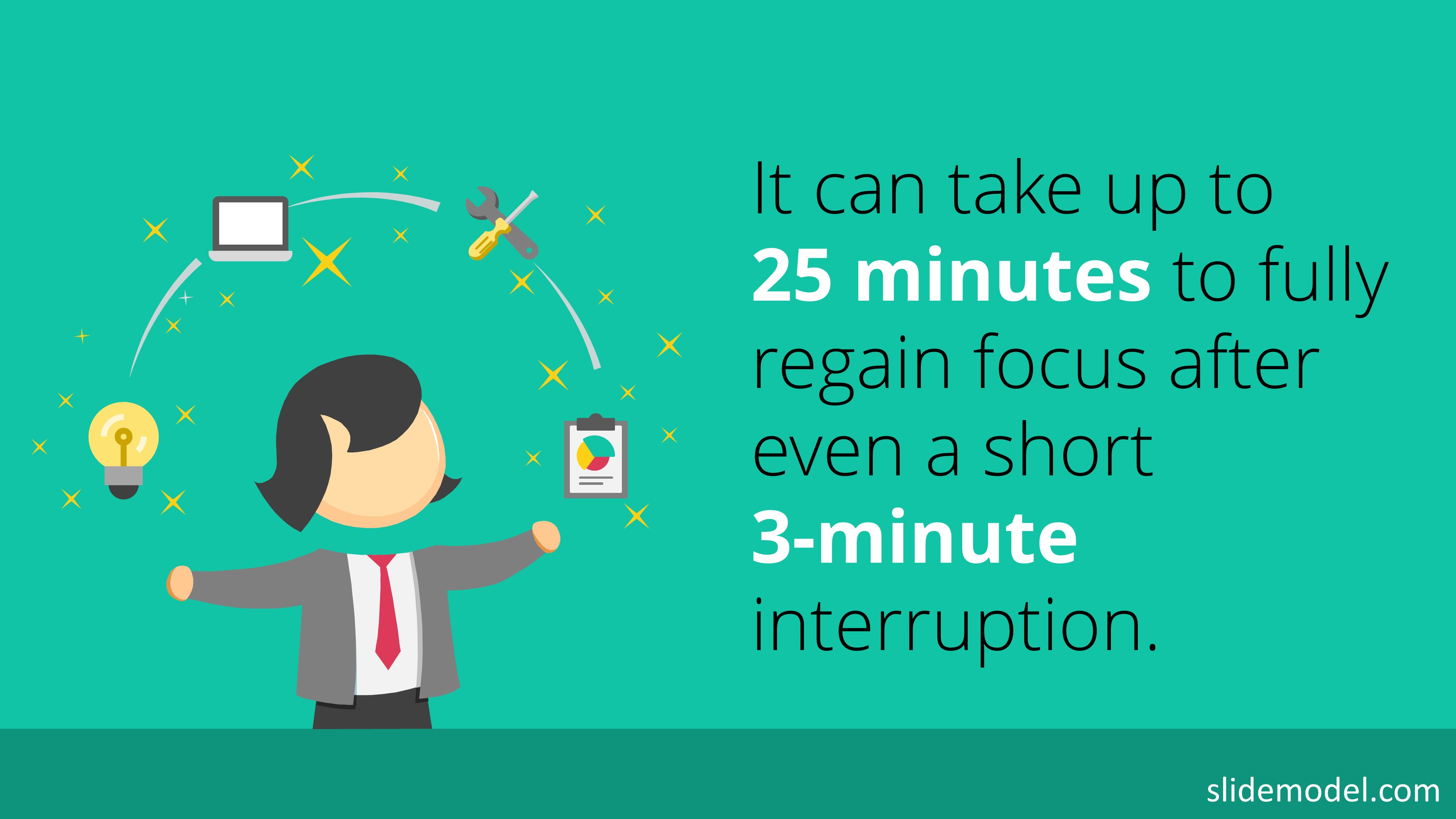
So What is Context Switching?
Context switching can be defined as “moving from one task to a totally different one”. As a result, attention to the original task at hand is lost and must be regained.
Context switching can be either internal or external, but both involve attention switching. Here are a few examples:
- You are deeply engrossed in a report. You get a “ping” notification of an email and you immediately stop what you are doing and check your inbox – external switching.
- You are working from home and preparing a proposal for a possible client you really want. But your mind wanders to thoughts of buying a new car. You get online to check out models and prices – internal switching.
Why Context Switching Isn’t Doing You Any Good?
A summary of research on context switching, published by the American Psychological Association, points out that this activity becomes harder on the human brain and takes longer as the tasks are more complex.
Switching from cooking to laundry and then back again is not a large problem for the brain, because there is not a lot of complex brain activity going on for either task. While these are certain productive tasks, they are almost rote and do not require sustained focus.
However, switching from solving math problems to a chemistry experiment is more taxing for our brains, because both of these tasks involve cognitive brain activity and the use of different synapses to complete them. Thus, juggling tasks of this nature means that your brain needs time for refocusing, and that’s when you break the streak of being productive.
According to Gerald Weinberg, a psychological workplace consultant, adding one project to a current one and then attempting to switch back and forth results in a 20% loss of time. Adding a third task to the mix results in a 50% loss of time.
During another combined study, the collaborators concluded that context switching eventually causes more frustration and stress, than any perceived productivity gains. Often, the study says, it creates a need to work faster, and the worry that neither of the tasks will be completed well or on time. Add to this the time it takes to refocus each time, and there is a “perfect storm” of anxiety and stress.
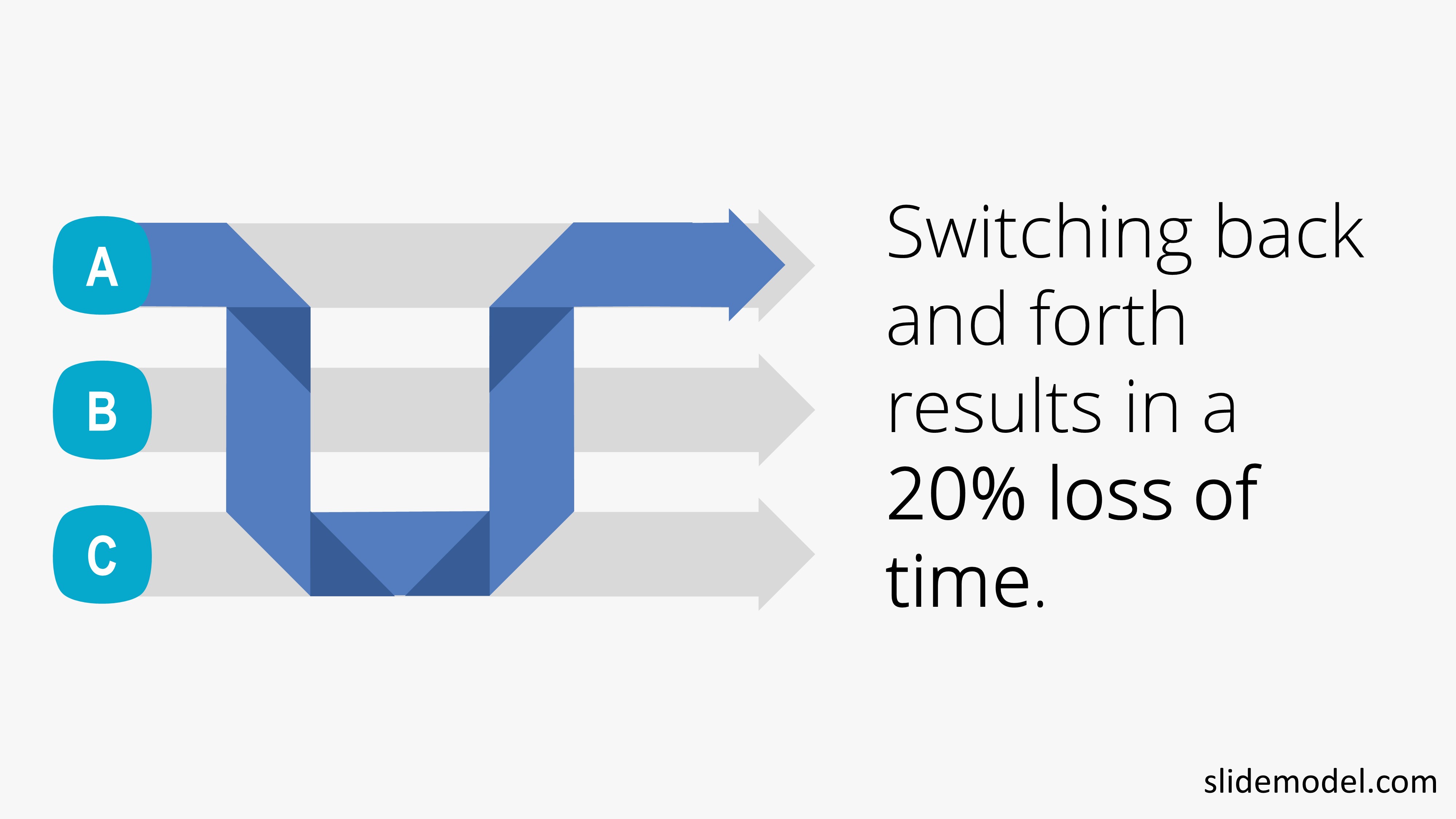
A Quick Multitasking Definition
While context switching involves interruptions and disruptions that cause a mental shift from a task at hand to something totally unrelated, multitasking involves working on two or more work-related tasks at the same time.
Is multitasking related to context switching? It is, in terms of what the brain does during these two activities. Whether two activities are both related to work or not, the fact that the brain must shift focus back and forth is still apparent and does have an impact on your productivity.
Let’s take a look at a few quick examples of multitasking to further illustrate the issue. (But this is not the only way that multitasking occurs.)
Sometimes, multitasking can happen just like context switching, only it is far more rapid. Thus, a worker may be deep into a project or task and attempt to listen to a podcast or online training seminar at the same time. Or you may be hanging on the phone with someone and trying to do some basic data entry work at the same time.
In both cases, the brain is switching back and forth in rapid succession, attempting to “figure out” which task to focus on and eventually fails at both. This is one of the most negative effects of multitasking – doing neither thing well and missing important information or making mistakes.
Amazingly, most people keep multitasking and believe that they are doing just fine. And herein lies the myth of multitasking: scientifically only about 2.5% of the world’s population has the physical capacity to multitask.
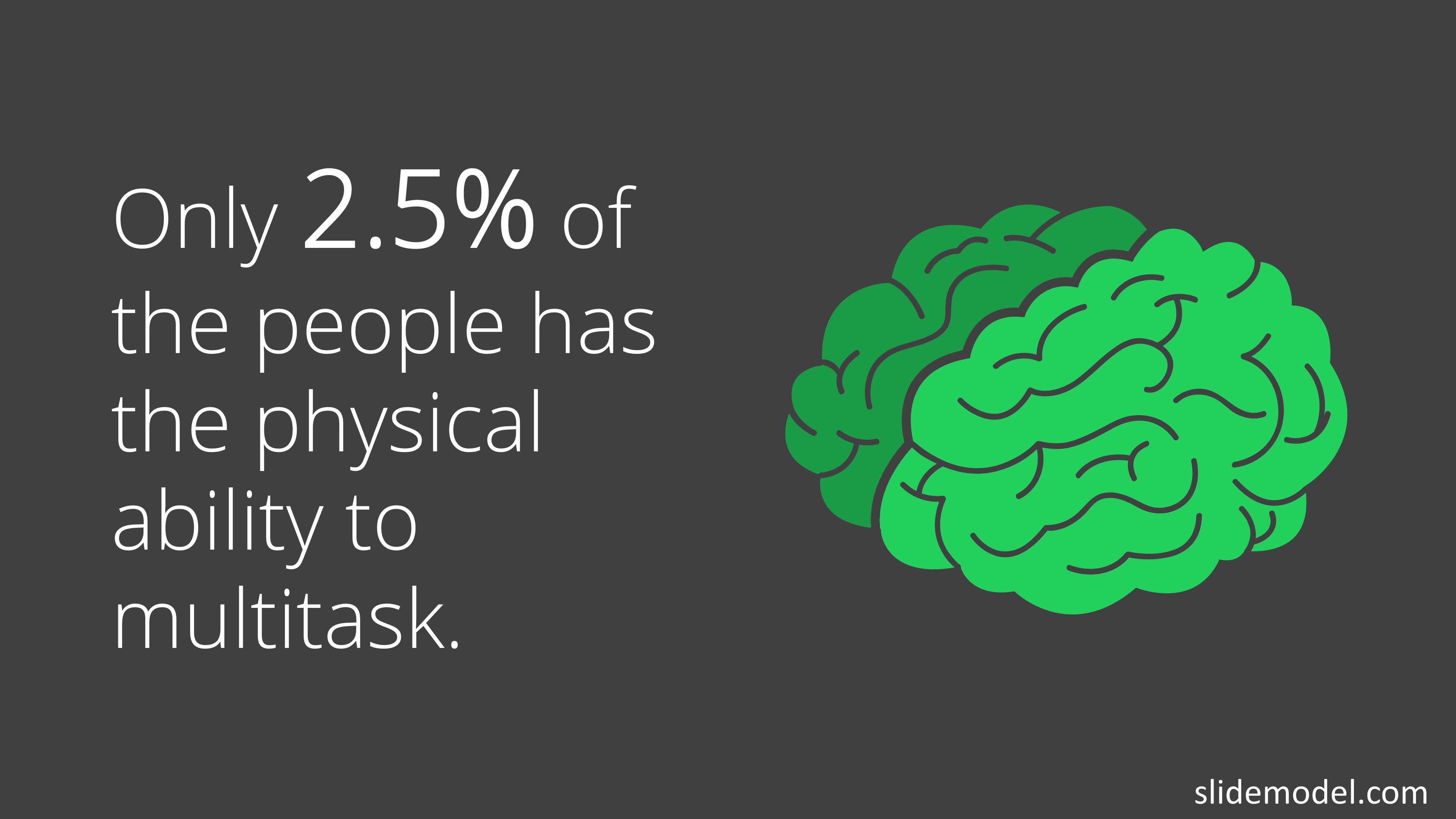
Why Multitasking is Bad for You?
While many claim that there are benefits of multitasking, the research says otherwise. And people who actually attempt to learn how to multitask are in for some bad news. Here’s a quick recap of the recent findings:
- Multi-taskers lose as much as 40% of their productivity when multitasking and make far more errors.
- Another study proved that people who consistently multitask suffer a reduction in IQ and other mental consequences similar to those who are sleep-deprived or consistently use substances like marijuana. These are clear negative effects of multitasking on the brain.
- Yet another study has pointed to actual brain damage as a result of those who are consistently using multiple media devices (e.g., phones and computers) at the same time.
All in all, context switching and multitasking have negative results in both work product and personal mental health/capacity. It’s time to make a change.
How to Reclaim Your Focus? – 4 Productivity Tips That Work
To stop the habits of context switching and multitasking, here are some strategies you can use:
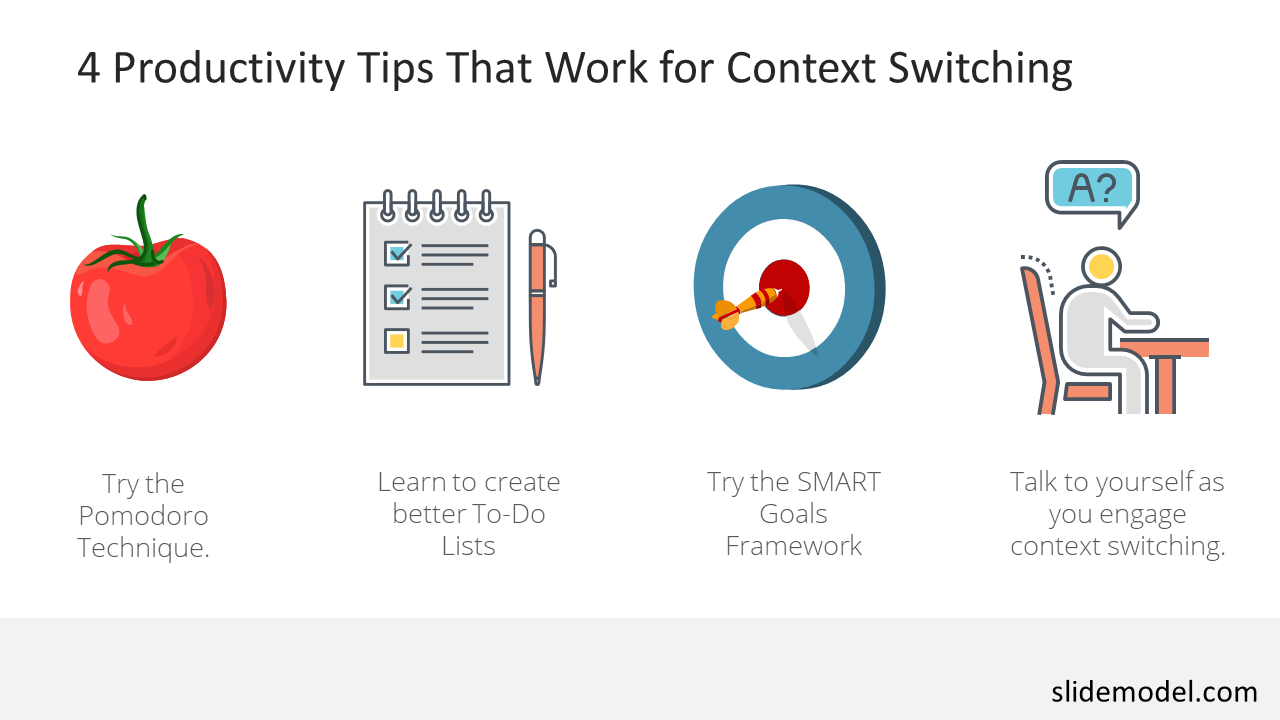
1. Try the Pomodoro Technique
Pomodoro is a popular time management technique that can also help you stop context switching.
In short, a worker divides his task into 25-minute chunks of time, actually setting a timer of sorts. Everything else is turned off, and no interruptions are allowed until that timer goes off. Then, the individual can take a break and switch context, checking emails, returning calls or texts, etc.
This technique can work in many circumstances. Although it probably cannot fully stop some disruptions (e.g., someone coming into your physical workspace with an emergency), but it can teach you to maintain a sustained focus.
2. Learn to Create Better To-Do Lists
To-do lists always end up among recommended time management tips for the always-busy folks. And, if you approach them the right way, they can work incredibly well for you! For starters, try these tips to create better to-do lists:
- Quality vs. Quantity: It’s easy to get bogged down with lots of little tasks, rather than focusing on the larger, more important tasks at hand. The list should be as short as possible and contain only those high priority tasks (maximum 3) for a specified period of time.
- Start with the Hardest Task: If you attack the hardest task first and complete it, you have a huge sense of accomplishment and achievement. That positive mindset serves to move you forward to the next and the next. You are on a proverbial “roll.”
- Try the Getting Things Done (GTD) method: based on a book by the same name by David Allen. Some of the most productive people in the world swear by it.
- Another variation of a to-do list is a method called Business Bullet Journaling, a concept developed by Ryder Carroll in his book of the same title. This is a method of setting monthly goals/task responsibilities, breaking them down into weeks and days. This allows for careful tracking of what is accomplished and what must be carried over. In short, it is a record of the past, the now, and the future. For many, it may work better than the daily to-do list, because the larger picture can always be seen.
3. Try the SMART Goals Framework
Albeit mostly used for company-wide strategic planning, the SMART framework can also be adapted for personal use, especially if you are working on a large project which must be broken down into smaller chunks.
You can set your specific goals for the day that are attainable in the amount of time you have allotted to them, and then measure your success. This should help to keep you more focused on what must be accomplished. Using it in conjunction with the Pomodoro Technique could work well.
4. Talk to Yourself as You Engage in Context Switching
One of the recommendations from the APA research summary mentioned above is to actively prepare your brain for a context switch.
Suppose, for example, you have been working on a report and you are interrupted by a superior who has an urgent task. He asks you to please stop what you are working on and get this more urgent item done first. The researchers say that if you actually speak to yourself about the task switching you are about to make, your brain will make the switch easier and faster.
Giving yourself this sort of “prep talk” regularly can drastically minimize the taxing effects of context switching on your brain.
Conclusion
While context switching and multitasking at work are not always physically dangerous (although they can be in a factory situation or on the road), the mental costs are there. It’s frightening to know that even IQ can drop as a result. And productivity definitely suffers. If you want to avoid the negative consequences of context-switching and multitasking, so get more proactive and intentional regarding the way you work!
